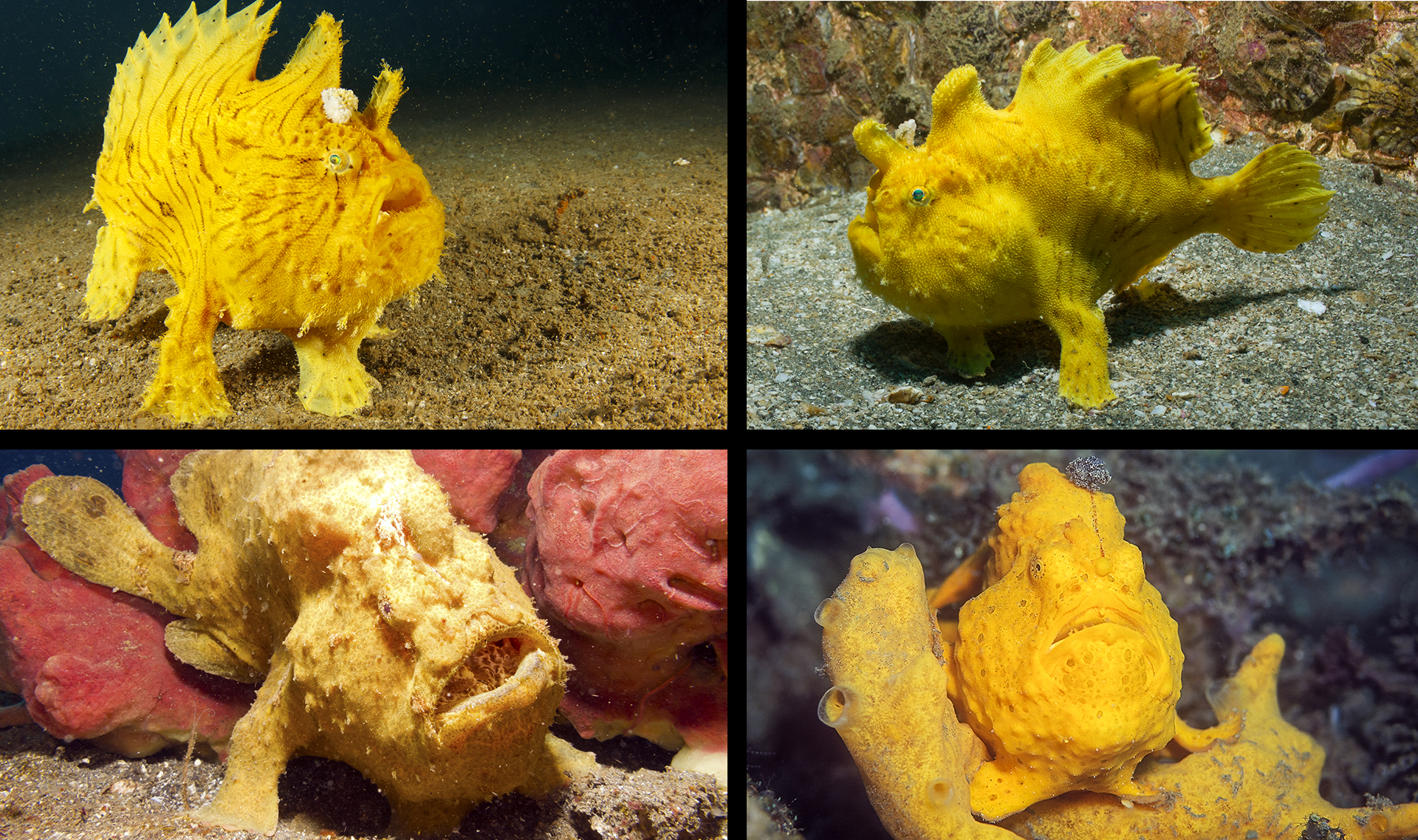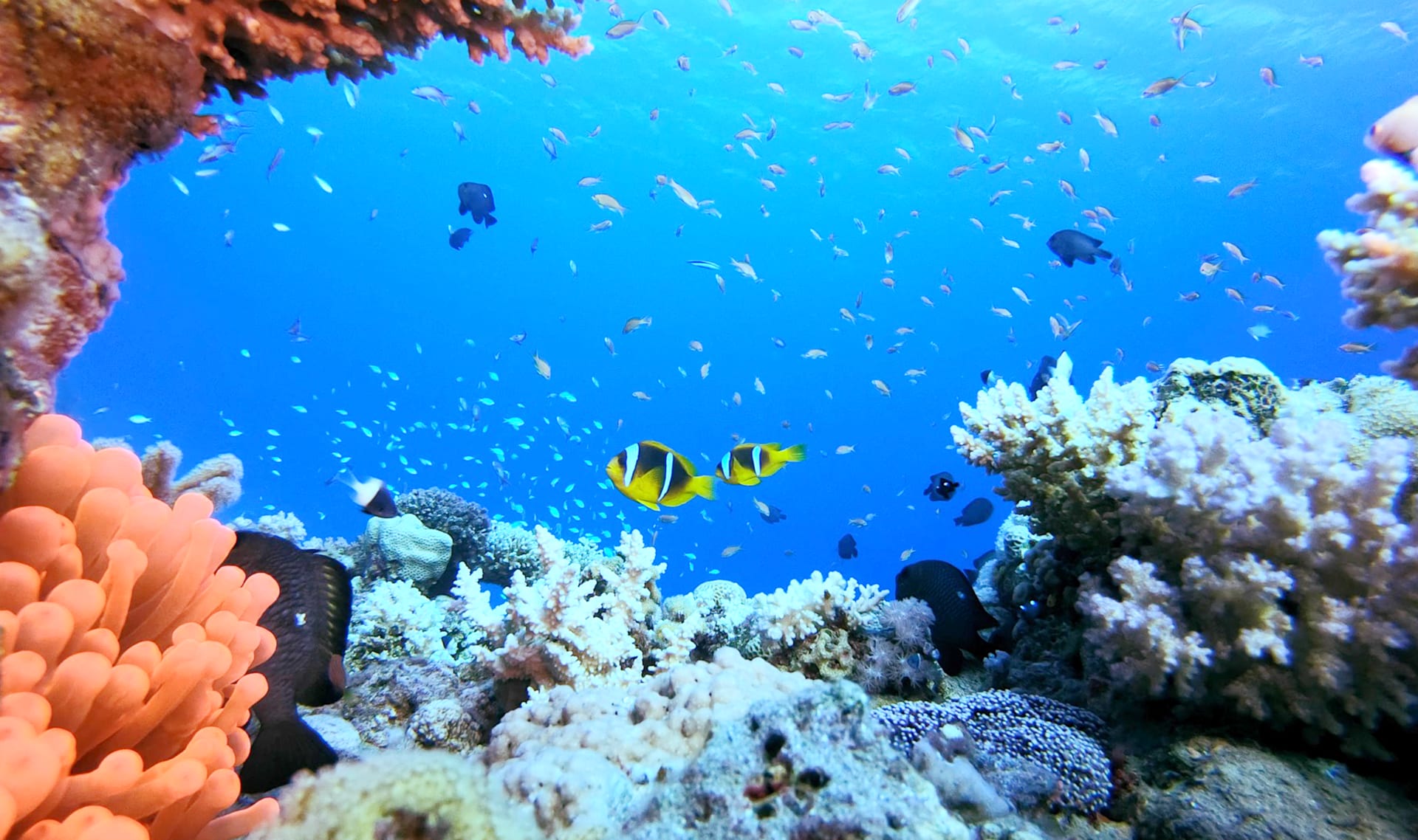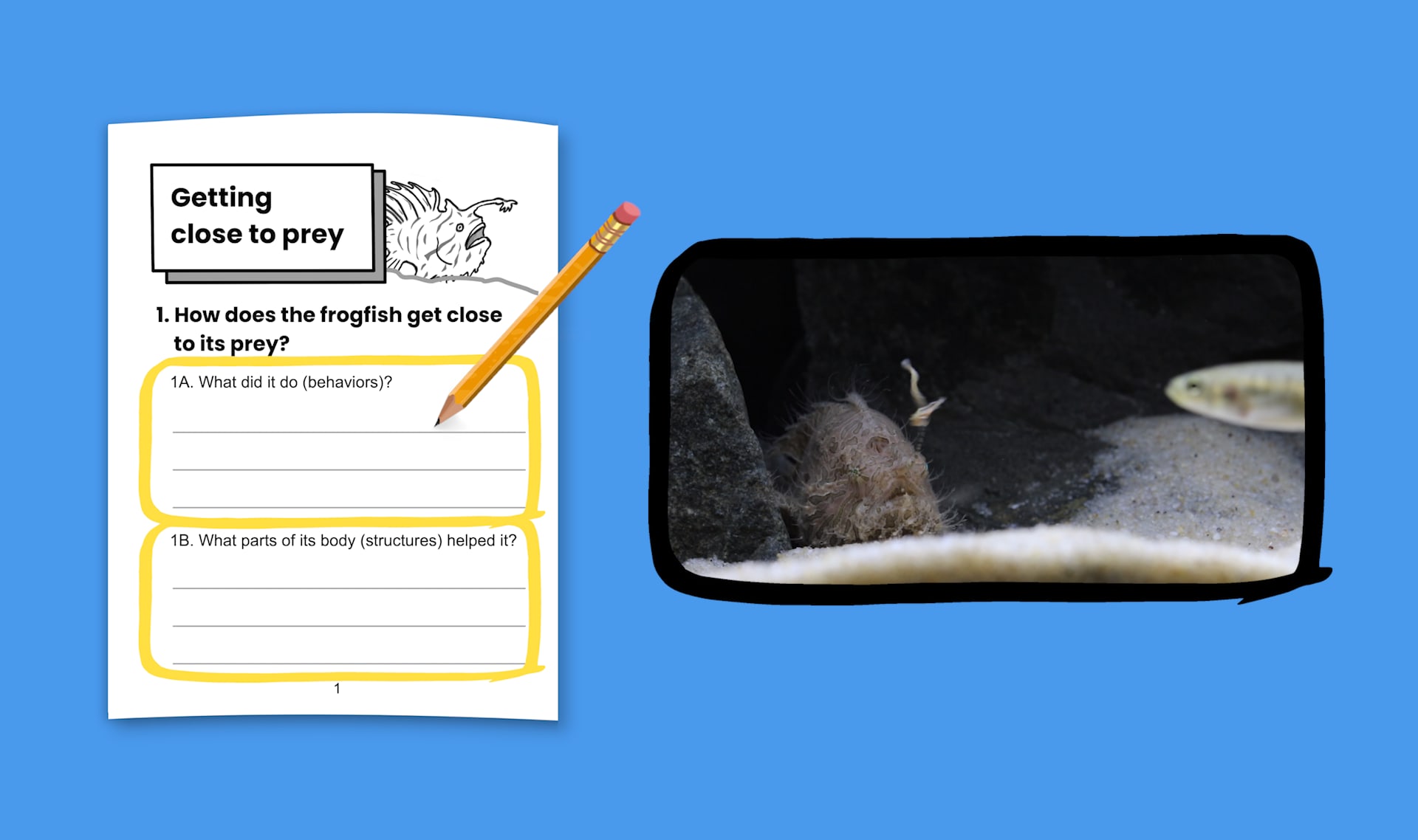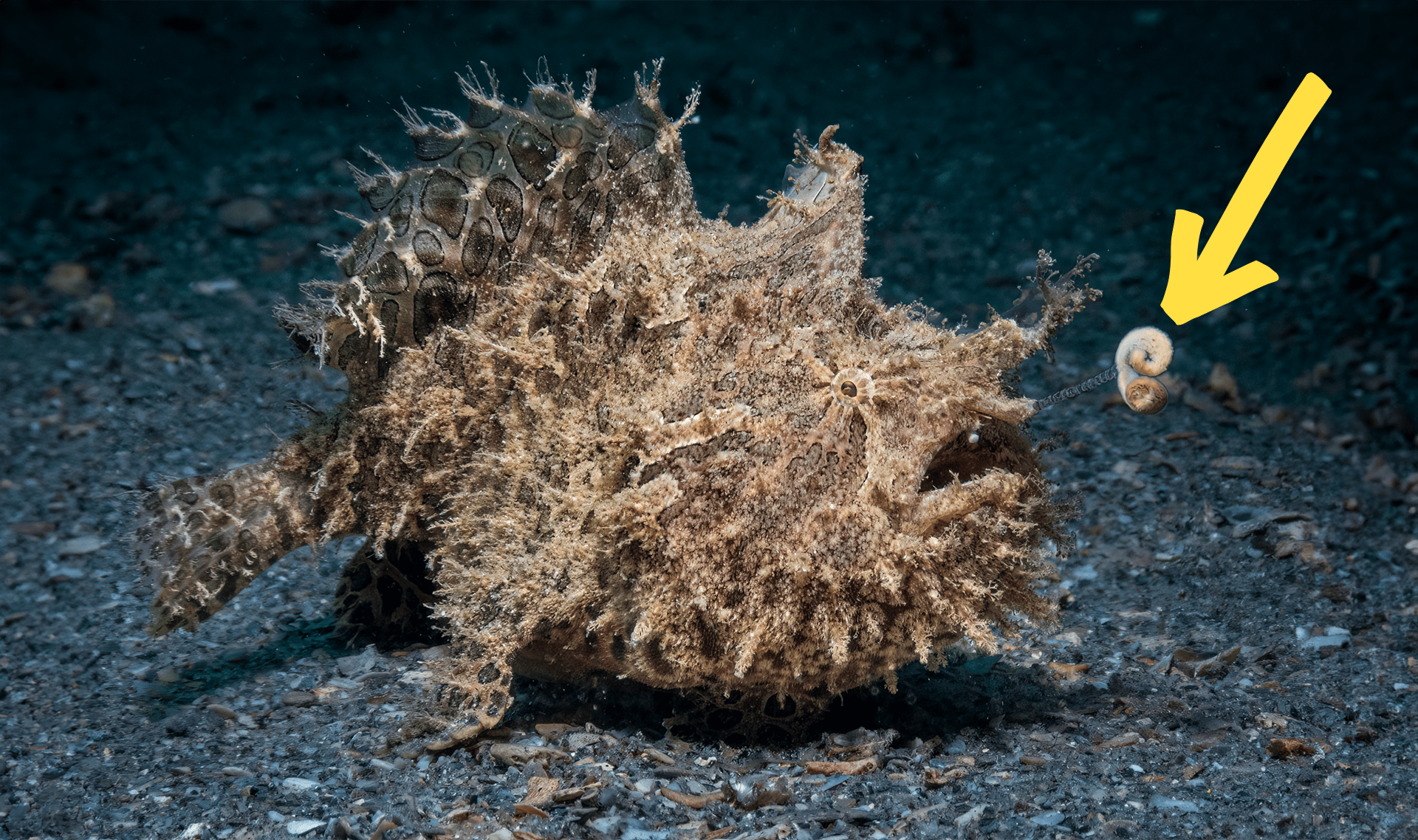


DISCUSS: (1 of 2)
What might be challenging about hunting prey in the ocean?
DISCUSS: (2 of 2)
What traits might help an underwater animal find and catch their food?






































Grade 4
Animal & Plant Adaptations
Animal Adaptations
4-LS1-1
In this lesson, students make observations of an underwater animal, a frogfish, in order to collect evidence that its external structures serve specific functions. In the activity, Frogfish Finder , students use their observations to construct an argument that the frogfish’s external and internal structures work together as part of a system to support their growth and survival.
Preview activity| Frogfish Field Journal printout | Print 30 copies |
| Frogfish Field Journal Answer Key teacher-only resource | 1 copy |
|
Scissors
|
15 pairs |
|
Pipe Cleaners
|
30 pipe cleaners |
We suggest students work in pairs. Homeschool students can work on their own.
Grade 4
Animal & Plant Adaptations
Animal Adaptations
4-LS1-1
Thanks for your feedback! If you have a question or need help, please contact us. Please consider sharing your review:
Sorry the lesson didn’t go well. We read every single review in an effort to improve our Mysteries.
Thanks for letting us know. We’ll wait to ask you for feedback until after you've actually taught it.
Thanks for the feedback! We read every single review in an effort to improve our Mysteries.
Please follow these steps:
Locked
6:10

Why is the sky blue?
Locked
4:41

Why do we call them doughnuts?
Locked
5:16

Could a turtle live outside its shell?
Your membership is expired. The archive of past Mini Lessons is not included in your limited access.
View pricing